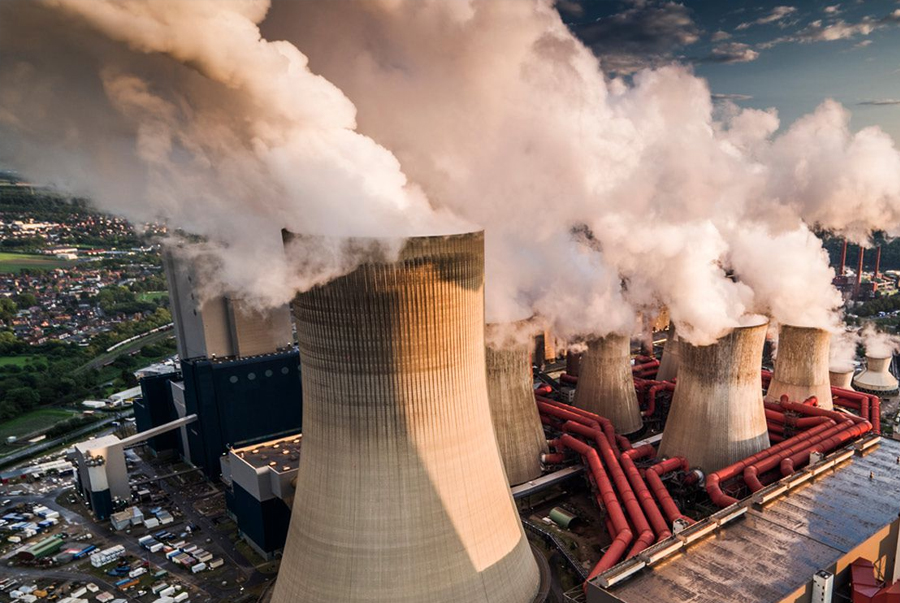Hi readers! how is your understanding of climate. Do you now believe in climate change, or you think it is a political issue? In my view there is something in between “climate change or no climate change” that we don’t understand but those who matter in this business they do. Let’s hope that one of these days, world will come to know it and that will be the time when people will seriously think about how to deal with the problem. Nevertheless, the question is
Why most people consider it a political issue?
According to NIWA, the Global Warming Potential (GWP) of a particular greenhouse gas is its ability to trap extra heat in the atmosphere over time relative to carbon dioxide (CO2). This most often is calculated over 100 years and is known as the 100-year GWP which depends upon two things. i., How effective is the gas in trapping heat while it is in the atmosphere and ii., how long it stays in the atmosphere before it breaks down.
Methane brakes down very quickly but the average methane molecule stays in the atmosphere for nearly 12 years, but it traps heat more effectively than CO2 which has much longer lifetime. Let’s assume that if a particular GHG traps certain amount of heat, how much CO2 would trap the same amount? The 100-year GWP of methane is 25 hence if one tone of methane is released into atmosphere it would create same warming as 25 tons of CO2 and is often known as CO2e (e is for equivalent).
Now look carefully at the following figures.
This indicates GWP and Atmospheric Lifetime for Major Greenhouse Gases calculated by Intergovernmental Panel on Climate Change ( IPCC) Fifth Assessment Report 2014.
This report mentioned Carbon dioxide’s GWP in 100-year time zone as 1 and its atmospheric lifetime as 100* years. Compared to this, GWP of
Methane (CH4) according to IPCC is 25 but
Science Direct says it is 28-34, another
Science Direct report says it is 20,
EPA says it is between 27-30,
UNECE says it is 20, and
Wikipedia says it is 27.9
Which to believe? Better you decide dear readers.
[*As per IPCC, no single lifetime can be given for carbon dioxide because it moves throughout the earth system at differing rates. Some CO2 will be absorbed very quickly, while some will remain in atmosphere for thousands of years].
Now look at Nitrous Oxide (N2O)
According to IPCC its GWP is 265,
EPA says it is 273,
Science Direct says it is 296,
sustainabilitytime says it is 300,
globallandscapforum says it is 265-298, while
ncbi.nim.nih.cornel.edu says it is 300
Such variability in numerical figures force people to consider Global Warming a political issue because if it is such a serious matter, it should be handled seriously instead of casually as is the case here. However,
It can be argued that the variations could be due to different measurement methods or a common judgmental error but then the same argument can be valid for the global warming/climate change measurement as well which no IPCC model has yet validated.
What do you think?
However, the major GHG is water vapor (H2O not mentioned in this list), which along with CO2, Ch4 and N2O, occurred naturally.
The sources of naturally occurring greenhouse gases are fossil fuel combustion, gas flaming, land use changes, waste dumps, livestock and cement production:
(the major culprit of global warming generally ignored or not being mentioned by climate experts. Why? The answer to this why is simply the vested interests of those who matter and that’s another reason that people consider GW a Political issue),

The concentration of CO2 in the air has increased from approximately 290 ppm in 1870 to 370 ppm in the year 2000 (80ppm in 130 years@ 0.615 ppm year1). It was 385.54 in 2008, 387.26 in 2009 and 389.69 in 2010 (4.15 ppm increase in 3 years @ 1.83 ppm year1, Figure.1). From 370 ppm in the year 2000, it reached 413.30 ppm in 2020 (43.3 ppm increase in 20 years @ 2.165 ppm increase year1, Figure 2). This is probably the period when emission of CO2 from cement industry started increasing. It was 1.4 billion tons (1.2 billion metric tons) of CO2 in 2002 and doubled to 2.9 billion tons in 2021 accounting to over 7% of all global emission. (https://sustainabilitymag.com/net-zero/cement-carbon-dioxide-emissions-have-doubled-in-20-years),
Indicating thereby that cement industry is the main culprit but
who cares
This is another indication that climate change is a political issue

However, during the last 3 years, it started increasing quickly and reached 413.3 ppm in 2020, 415.15 ppm in 2021, and 417.99 ppm in 2022 (4.69 ppm increase in 3 years @ 1.56 ppm year1 Figure.3) though it has already crossed cutoff line (400 ppm) since 2015.
Compared to 130 years data, the rate is higher between 2008-2010, highest between 2000-2020 and contrary to what the IPCC says, data indicated that rate of CO2 emission is decreasing between 2020-2022 (Figure 3).
Contrary to scientists, non-scientists believes that CEMENT industry is more harmful than fossil fuel combustion because it has quietly doubled the CO2 emission during the past 20 years. Paris Agreement, therefore, demanded that cement industry should reduce at least 16% of its annual emission by 2030.
Compared to steel, cement production requires lots of heat which causes emissions, but chemical process of making cement itself produces a lot of carbon dioxide. It requires clinker (brittle binding agent) that is made when calcium carbonate (Limestone) is taken out of the ground and heated to1480 to 1540 degrees Celsius to turn it into calcium oxide: process that doffs CO2 out of the limestone which goes into the air (https://apnews.com/article/climate-science-china-pollution-3d97642acbb07fca7540edca38448266).

Concrete requires power for its manufacturing and is the second-most widely used substance on earth, behind only water while cement sector is the third-largest consumer of energy and the second-largest emitter of
CO2 as every metric ton of cement manufactured produces nearly 1,370 pounds of CO2 that makes it difficult for cement industry when it comes to reducing its climate impact.
To find an alternative to cement, material scientists from Tokyo University have developed a novel process for making cement entirely from food waste like cabbage leaves and orange peel. https://inhabitat.com/new-technology-to-make-edible-cement-from-food-waste/. The technology turns food waste into potentially edible and biodegradable cement that can be used for constructing homes. This is of two-fold significance as the food that goes waste contributes to global warming by releasing methane gas into atmosphere during decomposition which can be reduced while the cement production contributes up to 8% of global CO2 emission which can also be reduced. Those who are interested in this technology can visit above mentioned website, however, researcher says that,
“the newly made cement can be eaten after being broken into pieces and boiled and that the cement could be instrumental in making temporary homes for evacuation purposes where it can be converted into food should supplies run out. For example, if food cannot be delivered to the evacuees, they could eat makeshift beds made out of food cement”

Another alternative to cement is Adobe: a building material made from earth and organic material. Adobe architecture is known since 5,100 BC.
Adobe bricks are small so that they can air dry quickly without cracking. Subsequently, these bricks can be assembled, with the application of adobe mud to bind the individual bricks into a structure.
An adobe brick is made of earth mixed with water and an organic material such as straw or dung. The soil composition contains sand, silt, and clay. Straw is used for binding the bricks together and allowing the bricks to dry evenly which can prevent cracking due to uneven shrinkage rate through bricks. Dung offers the same advantage.
(Above the picture are old model adobe homes while those at the bottom are of new model)
Earth quick resistant adobe houses

Adobe material is inexpensive and requires small resource. Besides, it can serve as a significant heat reservoir due to thermal properties inherent in the walls typical in adobe construction. Any well-planned adobe wall of appropriate thickness is very effective at controlling inside temperature through the wide daily fluctuations typical of desert climates: a factor which has contributed to its longevity as a building material.
The ground supporting an adobe structure should be compressed, as the weight of adobe wall is significant and foundation settling may cause cracking of the wall. Adobe walls usually never rise above two stories as they are not load bearing and adobe has low structural strength (Please see various pictures of adobe homes).
When creating window and door openings, a lintel is placed on top of the opening to support the bricks above. To protect the interior and exterior of adobe walls, finishes such as mud plaster, whitewash, or stucco (fine plaster used for coating wall surfaces) can be applied to protect
the adobe wall from water damage, but need to be reapplied periodically. Alternatively, the walls can be finished with other nontraditional plasters that provide longer protection. Bricks made with stabilized adobe generally do not need protection of plasters.

The world largest structure of adobe houses.
The citadel (a fortress, on high ground above a city.) of Bam Iran, or Arg-e Bam in Kerman Province, Iran: The world’s largest adobe structure, dating back to at least 500 BC
So, you see dear readers, there is always something for everything provided we wish to do things differently.
I will see you next week with “Why water vapors are not being considered as Green House Gas”?
Till then, enjoy reading this and take care
Bye.





